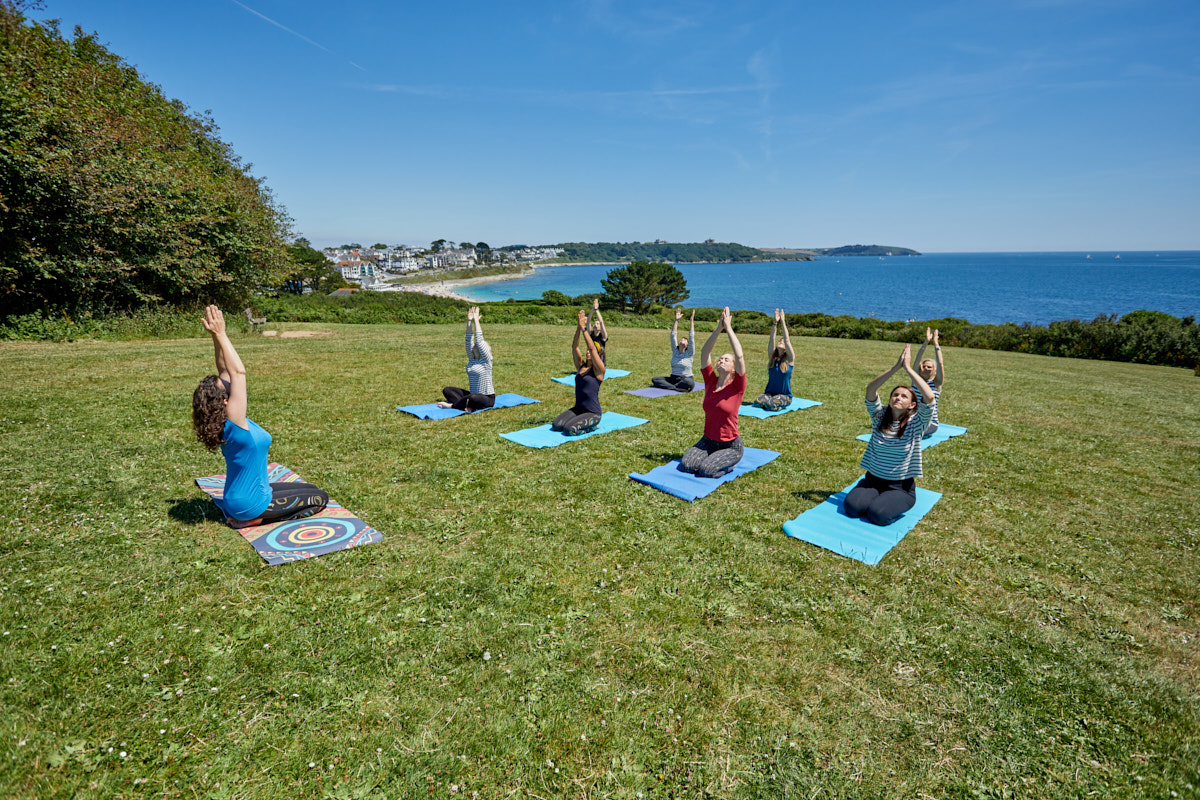Seasalt Nourish: Breathe Yourself Calm
Take five, with Seasalt yoga teacher Sophie, and try one of these easy breath work exercises to ease anxiety

Each week we have yoga and mindfulness sessions in our Seasalt offices to help support the mental health of our team. Since many of us are now working remotely, we asked one of our yoga teachers to share some simple ways to cultivate calm at home. Her top tip? Deep, healing breaths.
Sophie says, “As well as performing a vital physiological function, your breath often reflects your state of mind. When you feel stressed, it may become fast and shallow. When you sleep and your body is resting deeply, your breath becomes long and slow. The good news is, you can actively create this restful state by breathing more consciously. Here are some of my favourite breathing exercises to help you de-stress…”
Simple Resting Pose
For all of these exercises, you may be able to focus on your breath more easily lying down. I suggest lying on your back with a pillow under your head, knees bent and the soles of your feet on the floor. You can turn your palms to the sky, which helps open the chest or rest them on your belly.
Relax throughout your body, being especially conscious of your shoulders and jaw. Make your you are completely comfortable.
TIP: Set a timer for three, five or ten minutes, so you don’t get distracted wondering how long to keeping going.

Movements of the Breath
- When your body is completely settled, become aware of your breath.
- For 5-10 breaths, be aware of your belly rising and falling.
- You could place your hands on your belly to help you focus on this area.
- For 5-10 breaths, be aware of the 360 degree expansion of your chest as you breathe.
- You could place your hands on the side of your ribs.
- Then tune into more subtle movements in your body as you breathe.
- You may be able to sense your collar bones moving apart a little when you inhale.
- You may notice your pelvic floor muscles moving downwards as you inhale.
- Notice all the little fluctuations that happen in your body as you breathe.
- Now imagine every cell in your body swelling just a little as you inhale and sense your whole body settling as you exhale.
- Imagine every cell in the body being nourished by your inhalations.
- With every exhalation, let go of any tension that remains.
- Continue for five-ten minutes.
Equal Breathing
In yoga we call this soothing technique Sama Vritti Pranayama. The aim is to make your inhale and exhale long, slow and equal in length.
- Notice the natural rhythm of your breath as you settle.
- Is the inhale or exhale longer? (For most of us, our inhale is shorter).
- Breathe in and out through your nose.
- Begin to consciously slow your breathing.
- Now see if you can lengthen the inhale.
- Begin counting your breaths, breathing in for three counts and out for three counts.
- Can you stretch this out to four of five counts?
- Continue for five-ten minutes.

Rest in the Pause
- Establish an equal breath rhythm as explained above.
- Then become aware of the turning points in the breath.
- If you are able, let there be a short pause at the top of each inhale.
- And be aware of the absolutely stillness of the body at the end of every exhalation.
- Rest into the pause before the breath turns, embodying this moment of stillness.
Ocean Breath
For those of us who are missing our favourite Cornish beaches, why not bring the sea into your breathing practise?
Picture waves gently lapping at the shore, imagine your breath as the waves rolling gently in and out. You could also listen to ocean sounds as you breathe.

Tell us about how you’re keeping calm over on Facebook or Instagram.
And find clothes to relax in, in our NEW COLLECTION.
